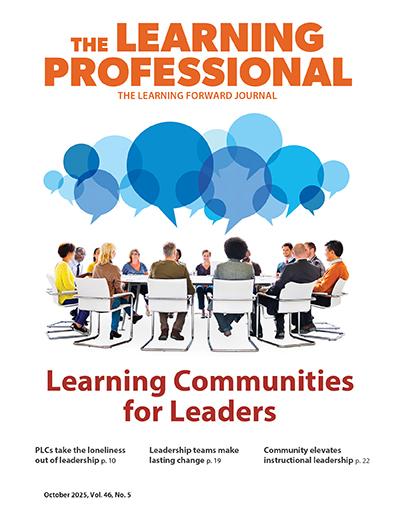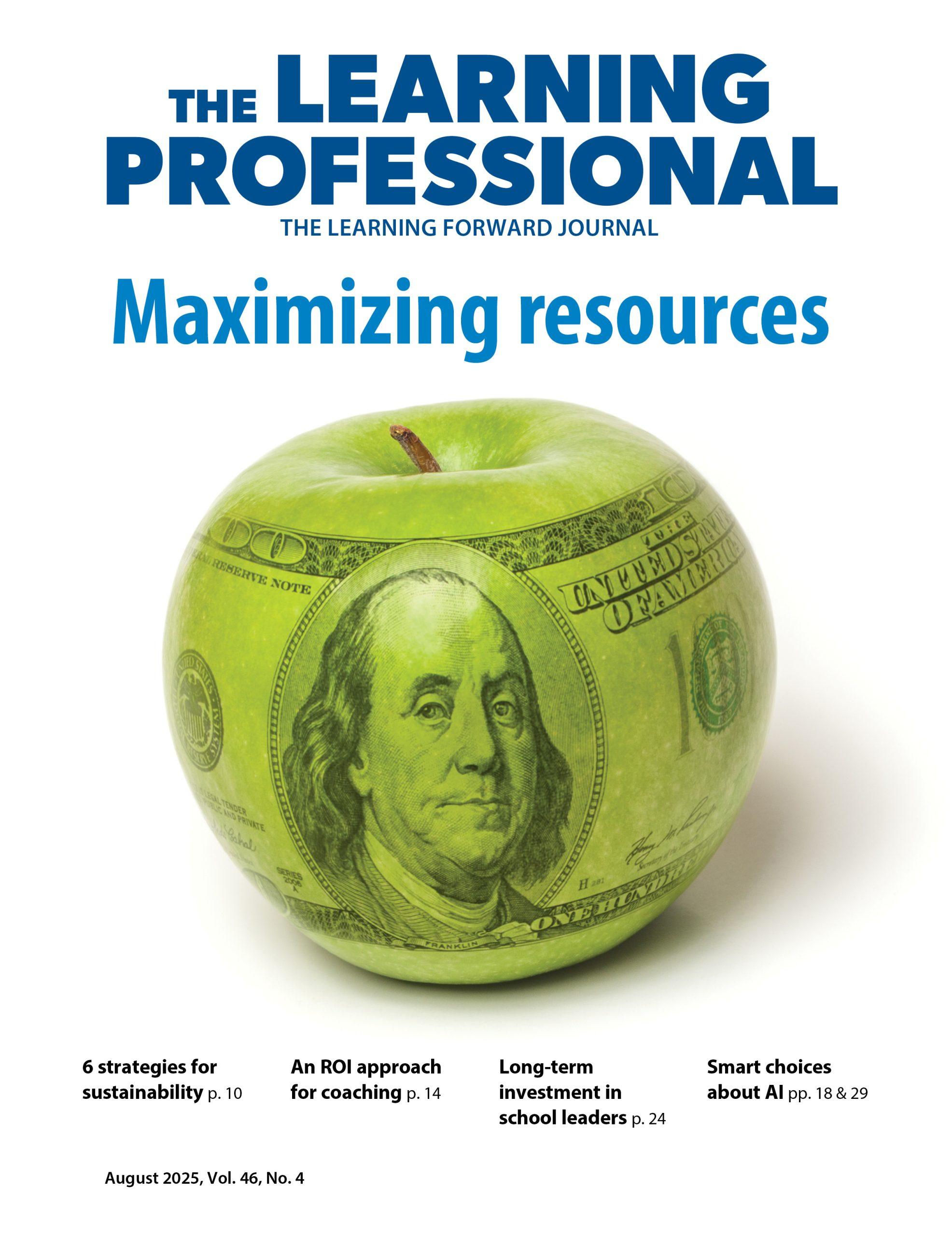Check Your Gauges
Calibrating conversations assist teachers in fine-tuning instruction
By Learning Forward
Categories: Coaching, Collaboration, ImplementationFebruary 2015
Read the remaining content with membership access. Join or log in below to continue.
Sed ut perspiciatis unde omnis iste natus error sit voluptatem accusantium doloremque laudantium, totam rem aperiam, eaque ipsa quae ab illo inventore veritatis et quasi architecto beatae vitae dicta sunt explicabo. Nemo enim ipsam voluptatem quia voluptas sit aspernatur aut odit aut fugit, sed quia consequuntur magni dolores eos qui ratione voluptatem sequi nesciunt. Neque porro quisquam est, qui dolorem ipsum quia dolor sit amet, consectetur, adipisci velit, sed quia non numquam eius modi tempora incidunt ut labore et dolore magnam aliquam quaerat voluptatem.
Calibrating Conversions
| StagesCoach mediates by having the coachee:
1. Select a focus. 2. Identify existing level of performance or placement on a rubric and give supporting evidence. 3. Specify desired placement, explore values and beliefs, and identify congruence with desired placement. 4. Establish behavioral indicators for new placement on rubric or level of performance. 5. Describe support needed to get to a higher level of performance and commit to action. 6. Reflect on the coaching process, explore refinements, and explore ways of using this process on his or her own. |
ToolsCoach navigates the stages using these tools:
1. Pause to allow you and your partner time to think. 2. Paraphrase from time to time. 3. Pose questions to specify thinking by asking, for example, “Specifically, which area might you want to focus on?” 4. Pose questions to explore thinking by asking, for example, “What are you aware of in your students that is causing you to move to a higher level of performance?” 5. Pay close attention to your partner. Attend with your mind and your body. |
Calibrating: A Third-Point Conversation
The document being used in the calibrating conversation becomes what is called a third point in the communication. The third point serves as a focus separate from each of the parties in the conversation.
A conversation between two people may signal a difference in status (Rock, 2009) — with one person as evaluator or judge and the other being judged. In a third-point conversation, however, the data — for instance, the standards rubric — is set in a position that both parties can observe free of judgment.
The value of designating a third point is that both parties can refer to it in an impersonal way. The third point does not belong to either party; it is simply a reference point for the conversation.
Physically referencing the third point in a space off to the side between the parties provides a psychologically safe place for information and depersonalizes ideas. Thus, placement of the conversational focus creates a triangle, either literally or referentially, keeping the conversational container psychologically safe (Wellman, 2009).
Establishing a visible “third point” for the conversation increases psychological safety for the teacher by shifting the focus to the data and promotes conversations about the factors producing positive results and what may be causing any perceived performance gaps (Grinder, 1997).
Resources
Here are resources on standards for teacher and leader performance.
Costa, A. & Garmston, B. (2015). Cognitive coaching: Developing self -directed leaders and learners. New York, NY: Rowman & Littlefield.
Council of Chief State School Officers. (2008). Educational leadership policy standards: ISLLC 2008. As adopted by the National Policy Board for Educational Administration. Washington, DC: Author.
Council of Chief State School Officers. (2011, April). InTASC Model Core Teaching Standards: A resource for state dialogue. Washington, DC: Author.
Danielson, C. (2007). Enhancing professional practice: A framework for teaching. Alexandria, VA: ASCD.
Educational Testing Service. (2005). Introduction to the PATHWISE Framework Induction Program. Princeton, NJ: Author.
Hattie, J. (2003, October). Teachers make a difference: What is the research evidence? Paper presented at Australian Council for Educational Research Annual Conference, Melbourne, Australia.
Marzano, R.J. (2007). The art and science of teaching. Alexandria, VA: ASCD.
Marzano, R., Pickering, D., & Pollock, J. (2001). Classroom instruction that works: Research-based strategies for increasing student achievement. Alexandria, VA: ASCD.
National Board for Professional Teaching Standards. www.nbpts.org.
Saphier, J., Haley-Spica, M.A, & Gower, R. (2008). The skillful teacher: Building your teaching skills. Acton, MA: Research for Better Teaching.
Silver Strong & Associates. (2014). The Thoughtful Classroom teacher effectiveness framework. Ho-Ho-Kus, NJ: Author.
Sternberg, R. & Horvath, J. (1995, august_September). A prototype view of expert teaching. Educational Researcher, 24(6), 9-17.
Tokuhama-Espinosa, T. (2014). Making classrooms better: 50 practical applications of mind, brain, and education science. New York, NY: W.W. Norton & Co.
Tsui, A. (2003). Understanding expertise in teaching: Case studies in ESL teaching. Cambridge, MA: Cambridge University Press.
References
Danielson, C. & McGreal, T. (2000). Teacher evaluation to enhance professional practice. Alexandria, VA: ASCD.
Grinder, M. (1997). The science of nonverbal communication. Battleground, WA: Michael Grinder and Associates.
Rock, D. (2009). Your brain at work: Strategies for overcoming distraction, regaining focus, and working smarter all day long. New York, NY: HarperCollins.
Wellman, B. (2009). Learning-focused supervision: Navigating difficult conversations. Guiford, VT: MiraVia.
Learning Forward is the only professional association devoted exclusively to those who work in educator professional development. We help our members plan, implement, and measure high-quality professional learning so they can achieve success with their systems, schools, and students.
Categories: Coaching, Collaboration, Implementation
Recent Issues
MAXIMIZING RESOURCES
August 2025
This issue offers advice about making the most of professional learning...
MEASURING LEARNING
June 2025
To know if your professional learning is successful, measure educators’...
NAVIGATING NEW ROLES
April 2025
Whether you’re new to your role or supporting others who are new,...
LEARNING DESIGNS
February 2025
How we learn influences what we learn. This issue shares essential...









